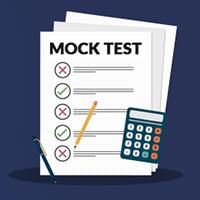CLAT Exam > CLAT Questions > According to the National Agricultural Aviat...
Start Learning for Free
According to the National Agricultural Aviation Society(NAAS), without the use of crop protection products to control insects, weeds, and diseases, crop yields per acre will drop by more than 50 per cent. The first aerial application of insecticide occurred in 1921, and it was a huge success. By contrast, in today’s economy all aircraft that are classified as aerial applicators do more than just apply insecticide; today, they also spread seeds and apply fertilizer.
Q. From the information given above, it CANNOT be validly concluded that
- a)according to the NAAS, if crop yields per acre never drop by more than 50 percent, then crop protection products have been used to control insects, weeds, and diseases.
- b)in today’s economy, any aircraft that cannot be used to apply fertilizer cannot be classified as an aerial applicator.
- c)in today’s economy, if an aerial applicator is used, then it will be able to spread seed and to apply fertilizer.
- d)according to the NAAS, if crop yields per acre drop by more than 50 percent, then crop protection products have not been used to control insects, weeds, and diseases.
Correct answer is option 'D'. Can you explain this answer?
Verified Answer
According to the National Agricultural Aviation Society(NAAS), withou...
According to NAAS, if crop protection products have not been used, then the yield per acre drops more than 50 percent. But if the crop yield per acre drops more than 50 percent, we cannot conclude that crop protections products have not been used. There could be some other reason for the drop.
View all questions of this test

|
Explore Courses for CLAT exam
|

|
Question Description
According to the National Agricultural Aviation Society(NAAS), without the use of crop protection products to control insects, weeds, and diseases, crop yields per acre will drop by more than 50 per cent. The first aerial application of insecticide occurred in 1921, and it was a huge success. By contrast, in today’s economy all aircraft that are classified as aerial applicators do more than just apply insecticide; today, they also spread seeds and apply fertilizer.Q. From the information given above, it CANNOT be validly concluded thata)according to the NAAS, if crop yields per acre never drop by more than 50 percent, then crop protection products have been used to control insects, weeds, and diseases.b)in today’s economy, any aircraft that cannot be used to apply fertilizer cannot be classified as an aerial applicator.c)in today’s economy, if an aerial applicator is used, then it will be able to spread seed and to apply fertilizer.d)according to the NAAS, if crop yields per acre drop by more than 50 percent, then crop protection products have not been used to control insects, weeds, and diseases.Correct answer is option 'D'. Can you explain this answer? for CLAT 2025 is part of CLAT preparation. The Question and answers have been prepared according to the CLAT exam syllabus. Information about According to the National Agricultural Aviation Society(NAAS), without the use of crop protection products to control insects, weeds, and diseases, crop yields per acre will drop by more than 50 per cent. The first aerial application of insecticide occurred in 1921, and it was a huge success. By contrast, in today’s economy all aircraft that are classified as aerial applicators do more than just apply insecticide; today, they also spread seeds and apply fertilizer.Q. From the information given above, it CANNOT be validly concluded thata)according to the NAAS, if crop yields per acre never drop by more than 50 percent, then crop protection products have been used to control insects, weeds, and diseases.b)in today’s economy, any aircraft that cannot be used to apply fertilizer cannot be classified as an aerial applicator.c)in today’s economy, if an aerial applicator is used, then it will be able to spread seed and to apply fertilizer.d)according to the NAAS, if crop yields per acre drop by more than 50 percent, then crop protection products have not been used to control insects, weeds, and diseases.Correct answer is option 'D'. Can you explain this answer? covers all topics & solutions for CLAT 2025 Exam. Find important definitions, questions, meanings, examples, exercises and tests below for According to the National Agricultural Aviation Society(NAAS), without the use of crop protection products to control insects, weeds, and diseases, crop yields per acre will drop by more than 50 per cent. The first aerial application of insecticide occurred in 1921, and it was a huge success. By contrast, in today’s economy all aircraft that are classified as aerial applicators do more than just apply insecticide; today, they also spread seeds and apply fertilizer.Q. From the information given above, it CANNOT be validly concluded thata)according to the NAAS, if crop yields per acre never drop by more than 50 percent, then crop protection products have been used to control insects, weeds, and diseases.b)in today’s economy, any aircraft that cannot be used to apply fertilizer cannot be classified as an aerial applicator.c)in today’s economy, if an aerial applicator is used, then it will be able to spread seed and to apply fertilizer.d)according to the NAAS, if crop yields per acre drop by more than 50 percent, then crop protection products have not been used to control insects, weeds, and diseases.Correct answer is option 'D'. Can you explain this answer?.
According to the National Agricultural Aviation Society(NAAS), without the use of crop protection products to control insects, weeds, and diseases, crop yields per acre will drop by more than 50 per cent. The first aerial application of insecticide occurred in 1921, and it was a huge success. By contrast, in today’s economy all aircraft that are classified as aerial applicators do more than just apply insecticide; today, they also spread seeds and apply fertilizer.Q. From the information given above, it CANNOT be validly concluded thata)according to the NAAS, if crop yields per acre never drop by more than 50 percent, then crop protection products have been used to control insects, weeds, and diseases.b)in today’s economy, any aircraft that cannot be used to apply fertilizer cannot be classified as an aerial applicator.c)in today’s economy, if an aerial applicator is used, then it will be able to spread seed and to apply fertilizer.d)according to the NAAS, if crop yields per acre drop by more than 50 percent, then crop protection products have not been used to control insects, weeds, and diseases.Correct answer is option 'D'. Can you explain this answer? for CLAT 2025 is part of CLAT preparation. The Question and answers have been prepared according to the CLAT exam syllabus. Information about According to the National Agricultural Aviation Society(NAAS), without the use of crop protection products to control insects, weeds, and diseases, crop yields per acre will drop by more than 50 per cent. The first aerial application of insecticide occurred in 1921, and it was a huge success. By contrast, in today’s economy all aircraft that are classified as aerial applicators do more than just apply insecticide; today, they also spread seeds and apply fertilizer.Q. From the information given above, it CANNOT be validly concluded thata)according to the NAAS, if crop yields per acre never drop by more than 50 percent, then crop protection products have been used to control insects, weeds, and diseases.b)in today’s economy, any aircraft that cannot be used to apply fertilizer cannot be classified as an aerial applicator.c)in today’s economy, if an aerial applicator is used, then it will be able to spread seed and to apply fertilizer.d)according to the NAAS, if crop yields per acre drop by more than 50 percent, then crop protection products have not been used to control insects, weeds, and diseases.Correct answer is option 'D'. Can you explain this answer? covers all topics & solutions for CLAT 2025 Exam. Find important definitions, questions, meanings, examples, exercises and tests below for According to the National Agricultural Aviation Society(NAAS), without the use of crop protection products to control insects, weeds, and diseases, crop yields per acre will drop by more than 50 per cent. The first aerial application of insecticide occurred in 1921, and it was a huge success. By contrast, in today’s economy all aircraft that are classified as aerial applicators do more than just apply insecticide; today, they also spread seeds and apply fertilizer.Q. From the information given above, it CANNOT be validly concluded thata)according to the NAAS, if crop yields per acre never drop by more than 50 percent, then crop protection products have been used to control insects, weeds, and diseases.b)in today’s economy, any aircraft that cannot be used to apply fertilizer cannot be classified as an aerial applicator.c)in today’s economy, if an aerial applicator is used, then it will be able to spread seed and to apply fertilizer.d)according to the NAAS, if crop yields per acre drop by more than 50 percent, then crop protection products have not been used to control insects, weeds, and diseases.Correct answer is option 'D'. Can you explain this answer?.
Solutions for According to the National Agricultural Aviation Society(NAAS), without the use of crop protection products to control insects, weeds, and diseases, crop yields per acre will drop by more than 50 per cent. The first aerial application of insecticide occurred in 1921, and it was a huge success. By contrast, in today’s economy all aircraft that are classified as aerial applicators do more than just apply insecticide; today, they also spread seeds and apply fertilizer.Q. From the information given above, it CANNOT be validly concluded thata)according to the NAAS, if crop yields per acre never drop by more than 50 percent, then crop protection products have been used to control insects, weeds, and diseases.b)in today’s economy, any aircraft that cannot be used to apply fertilizer cannot be classified as an aerial applicator.c)in today’s economy, if an aerial applicator is used, then it will be able to spread seed and to apply fertilizer.d)according to the NAAS, if crop yields per acre drop by more than 50 percent, then crop protection products have not been used to control insects, weeds, and diseases.Correct answer is option 'D'. Can you explain this answer? in English & in Hindi are available as part of our courses for CLAT.
Download more important topics, notes, lectures and mock test series for CLAT Exam by signing up for free.
Here you can find the meaning of According to the National Agricultural Aviation Society(NAAS), without the use of crop protection products to control insects, weeds, and diseases, crop yields per acre will drop by more than 50 per cent. The first aerial application of insecticide occurred in 1921, and it was a huge success. By contrast, in today’s economy all aircraft that are classified as aerial applicators do more than just apply insecticide; today, they also spread seeds and apply fertilizer.Q. From the information given above, it CANNOT be validly concluded thata)according to the NAAS, if crop yields per acre never drop by more than 50 percent, then crop protection products have been used to control insects, weeds, and diseases.b)in today’s economy, any aircraft that cannot be used to apply fertilizer cannot be classified as an aerial applicator.c)in today’s economy, if an aerial applicator is used, then it will be able to spread seed and to apply fertilizer.d)according to the NAAS, if crop yields per acre drop by more than 50 percent, then crop protection products have not been used to control insects, weeds, and diseases.Correct answer is option 'D'. Can you explain this answer? defined & explained in the simplest way possible. Besides giving the explanation of
According to the National Agricultural Aviation Society(NAAS), without the use of crop protection products to control insects, weeds, and diseases, crop yields per acre will drop by more than 50 per cent. The first aerial application of insecticide occurred in 1921, and it was a huge success. By contrast, in today’s economy all aircraft that are classified as aerial applicators do more than just apply insecticide; today, they also spread seeds and apply fertilizer.Q. From the information given above, it CANNOT be validly concluded thata)according to the NAAS, if crop yields per acre never drop by more than 50 percent, then crop protection products have been used to control insects, weeds, and diseases.b)in today’s economy, any aircraft that cannot be used to apply fertilizer cannot be classified as an aerial applicator.c)in today’s economy, if an aerial applicator is used, then it will be able to spread seed and to apply fertilizer.d)according to the NAAS, if crop yields per acre drop by more than 50 percent, then crop protection products have not been used to control insects, weeds, and diseases.Correct answer is option 'D'. Can you explain this answer?, a detailed solution for According to the National Agricultural Aviation Society(NAAS), without the use of crop protection products to control insects, weeds, and diseases, crop yields per acre will drop by more than 50 per cent. The first aerial application of insecticide occurred in 1921, and it was a huge success. By contrast, in today’s economy all aircraft that are classified as aerial applicators do more than just apply insecticide; today, they also spread seeds and apply fertilizer.Q. From the information given above, it CANNOT be validly concluded thata)according to the NAAS, if crop yields per acre never drop by more than 50 percent, then crop protection products have been used to control insects, weeds, and diseases.b)in today’s economy, any aircraft that cannot be used to apply fertilizer cannot be classified as an aerial applicator.c)in today’s economy, if an aerial applicator is used, then it will be able to spread seed and to apply fertilizer.d)according to the NAAS, if crop yields per acre drop by more than 50 percent, then crop protection products have not been used to control insects, weeds, and diseases.Correct answer is option 'D'. Can you explain this answer? has been provided alongside types of According to the National Agricultural Aviation Society(NAAS), without the use of crop protection products to control insects, weeds, and diseases, crop yields per acre will drop by more than 50 per cent. The first aerial application of insecticide occurred in 1921, and it was a huge success. By contrast, in today’s economy all aircraft that are classified as aerial applicators do more than just apply insecticide; today, they also spread seeds and apply fertilizer.Q. From the information given above, it CANNOT be validly concluded thata)according to the NAAS, if crop yields per acre never drop by more than 50 percent, then crop protection products have been used to control insects, weeds, and diseases.b)in today’s economy, any aircraft that cannot be used to apply fertilizer cannot be classified as an aerial applicator.c)in today’s economy, if an aerial applicator is used, then it will be able to spread seed and to apply fertilizer.d)according to the NAAS, if crop yields per acre drop by more than 50 percent, then crop protection products have not been used to control insects, weeds, and diseases.Correct answer is option 'D'. Can you explain this answer? theory, EduRev gives you an
ample number of questions to practice According to the National Agricultural Aviation Society(NAAS), without the use of crop protection products to control insects, weeds, and diseases, crop yields per acre will drop by more than 50 per cent. The first aerial application of insecticide occurred in 1921, and it was a huge success. By contrast, in today’s economy all aircraft that are classified as aerial applicators do more than just apply insecticide; today, they also spread seeds and apply fertilizer.Q. From the information given above, it CANNOT be validly concluded thata)according to the NAAS, if crop yields per acre never drop by more than 50 percent, then crop protection products have been used to control insects, weeds, and diseases.b)in today’s economy, any aircraft that cannot be used to apply fertilizer cannot be classified as an aerial applicator.c)in today’s economy, if an aerial applicator is used, then it will be able to spread seed and to apply fertilizer.d)according to the NAAS, if crop yields per acre drop by more than 50 percent, then crop protection products have not been used to control insects, weeds, and diseases.Correct answer is option 'D'. Can you explain this answer? tests, examples and also practice CLAT tests.

|
Explore Courses for CLAT exam
|

|
Signup to solve all Doubts
Signup to see your scores go up within 7 days! Learn & Practice with 1000+ FREE Notes, Videos & Tests.



























